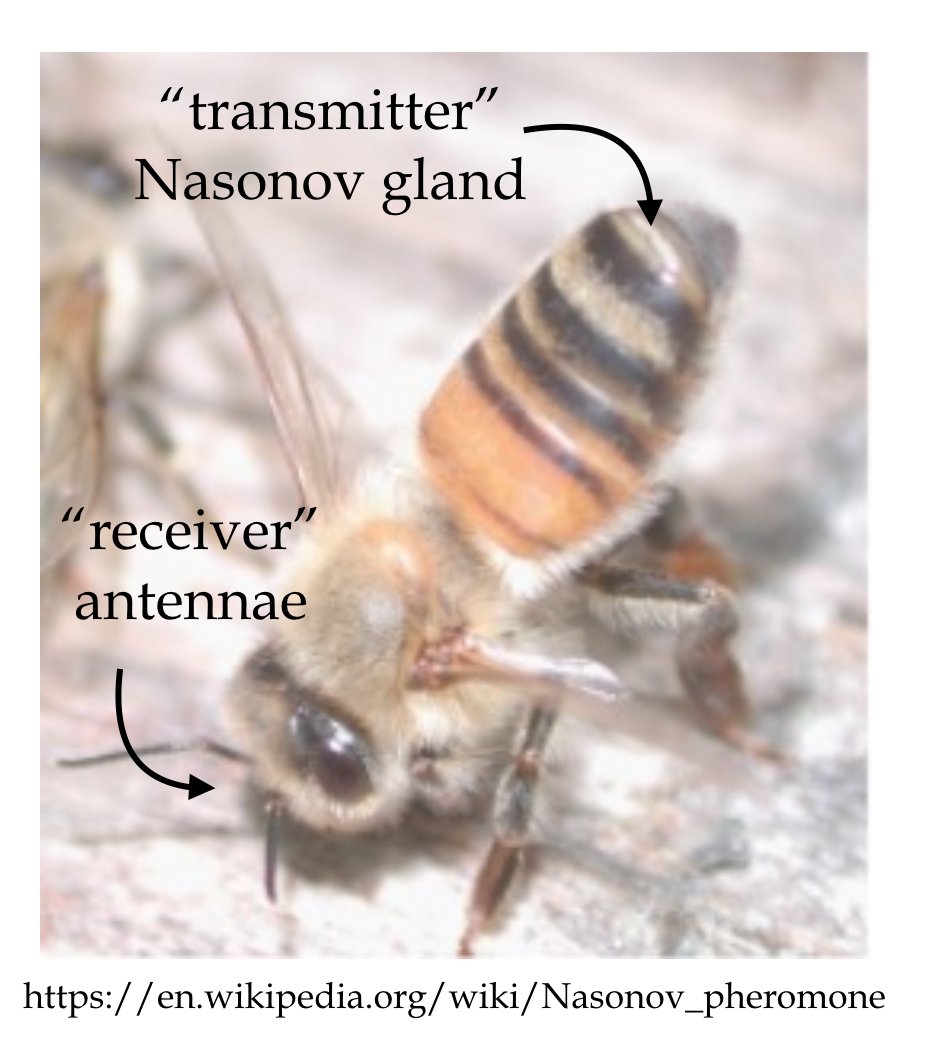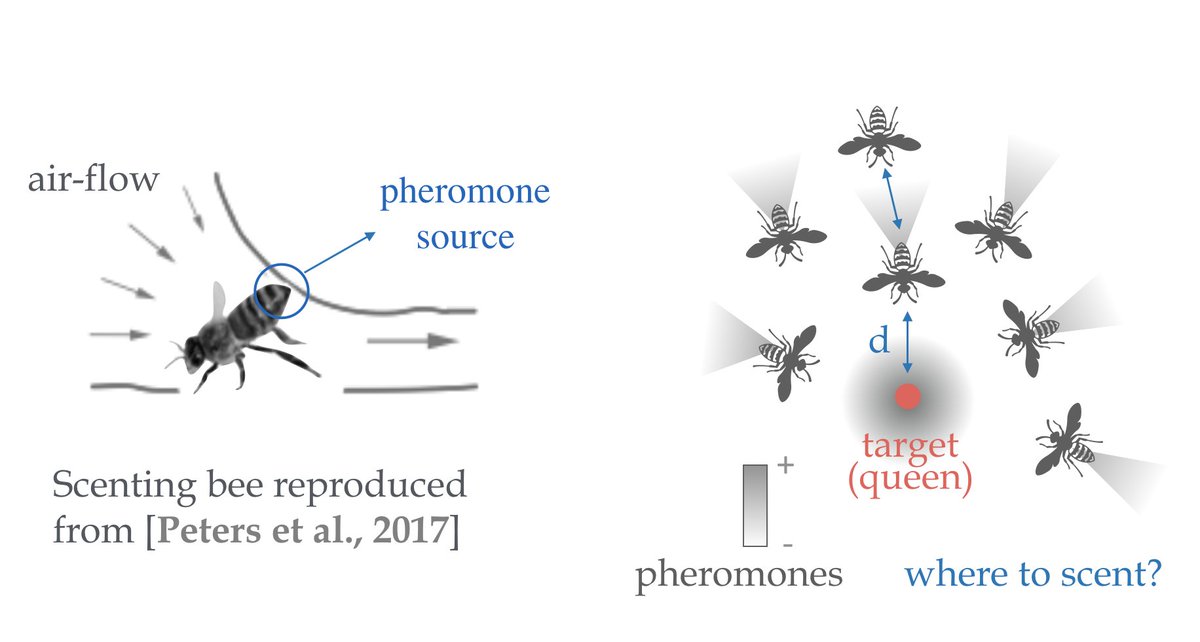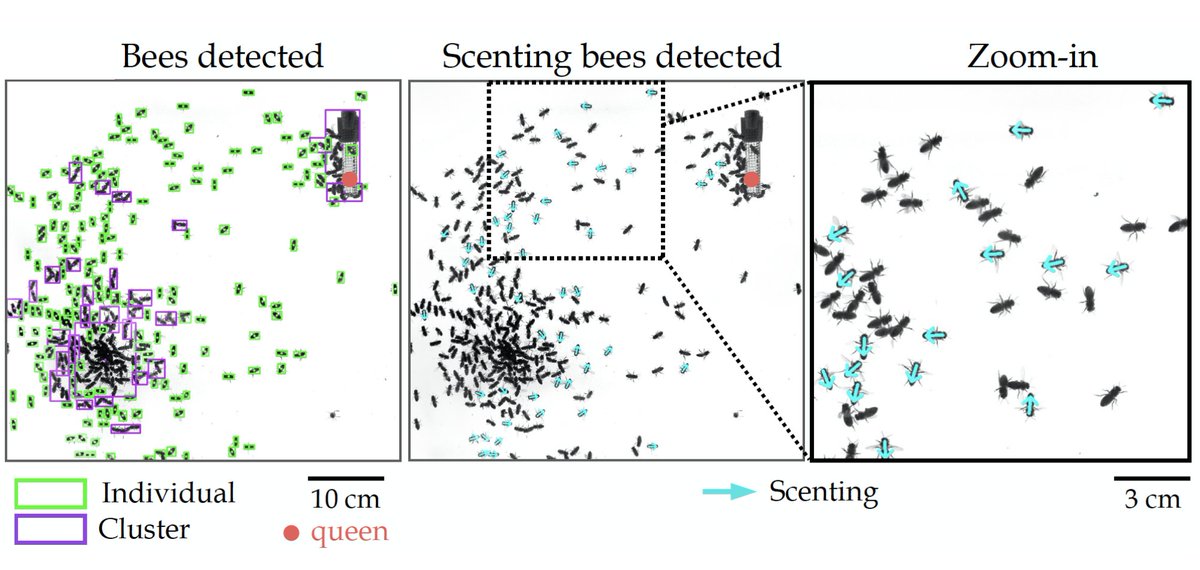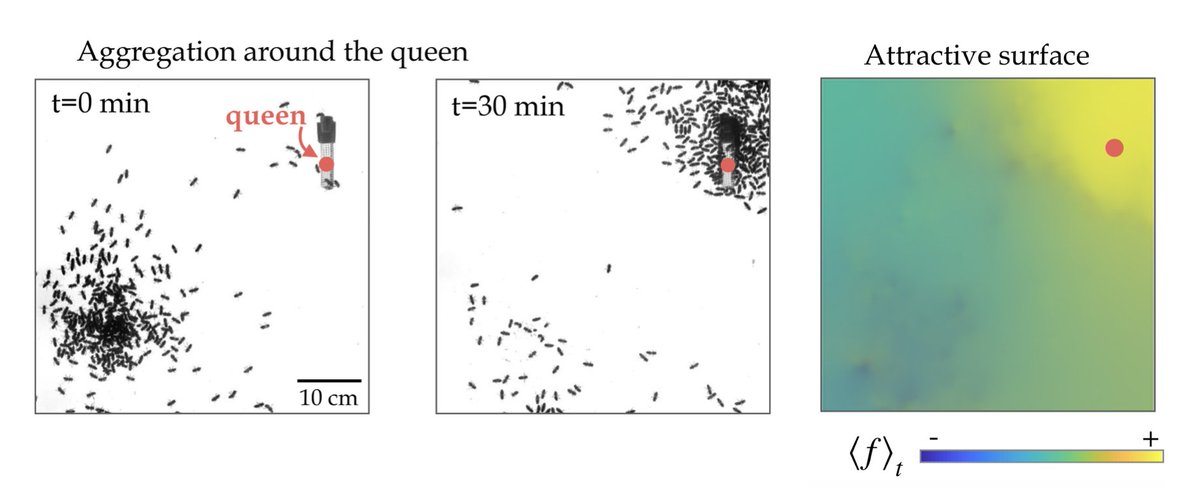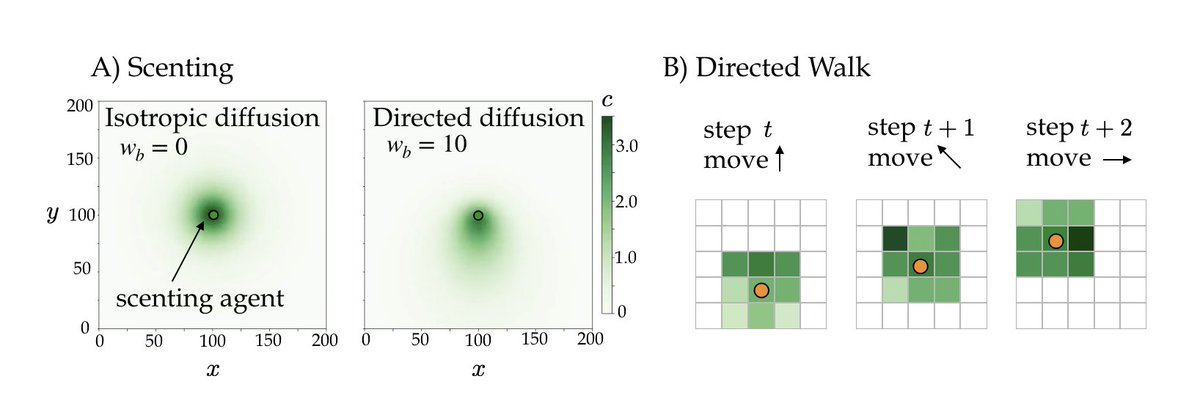1/n Time for some bee love? Excited to share our preprint on “Flow-mediated olfactory communication in honey bee swarms” u2028u2028
https://bit.ly/2ZNfgqq
lead">https://bit.ly/2ZNfgqq&q... by @DieuMyNguyen, w @mike_iuzzolino @greg_stephens, @bozeklab!
#HoneyBees #CollectiveBehavior
https://bit.ly/2ZNfgqq
lead">https://bit.ly/2ZNfgqq&q... by @DieuMyNguyen, w @mike_iuzzolino @greg_stephens, @bozeklab!
#HoneyBees #CollectiveBehavior
2/n To become a coherent swarm, bees locate their queen by tracking her pheromones. But how can distant individuals exploit these chemical signals which decay rapidly in space and time?
3/n We show that the bees collectively solve this problem by utilizing a behavior called “scenting”, where individual bees raise their abdomens to expose the pheromone Nasonov gland.
4/n This kind of chemical signaling is prevalent in nature, e.g., in slime mold aggregation, see a fascinating recent study
https://twitter.com/i/status/1191264712521945088
via">https://twitter.com/i/status/... @kotapub http://nature.com/articles/s42003-018-0273-6">https://nature.com/articles/...
https://twitter.com/i/status/1191264712521945088
via">https://twitter.com/i/status/... @kotapub http://nature.com/articles/s42003-018-0273-6">https://nature.com/articles/...
5/n Unlike the more traditional isotropic chemical signaling above, the bees create a directional bias by fanning their wings, which draws air along the pheromone gland along their anteroposterior axis.
6/n This leads to a dynamic network that recruits new broadcasting bees over time as the pheromones traveled a distance that is orders of magnitude the length of an individual.
7/n To identify scenting events, their location, and direction, @greg_stephens & @bozeklab developed a novel high-throughput #MachineLearning image analysis scheme that allows us to to track the search and aggregation dynamics of the bees
8/n If we treat the scenting locations and directions and a set of gradients that define a minimal surface, it will correspond the probability that a randomly moving non–scenting bee will end up at position (x, y) by following the local scenting directions of scenting bees
10/n To better understand such a flow-mediated directional communication strategy, we connect our experimental results to an #AgentBasedModel where virtual bees with simple, local behavioral rules, exist in a flow environment, and alternate between “Scenting” to “Directed Walk”.
11/n Our model shows that increased directional bias leads to a more efficient aggregation process that avoids local equilibrium configurations of isotropic communication, such as small bee clusters that persist throughout the simulation.
12/n Overall our results highlight a novel example of extended classical stigmergy: bees locally sense and globally manipulate the physical fields of chemical concentration and airflow…
In other words: bees are amazing! https://abs.twimg.com/emoji/v2/... draggable="false" alt="🐝" title="Honeybee" aria-label="Emoji: Honeybee">
https://abs.twimg.com/emoji/v2/... draggable="false" alt="🐝" title="Honeybee" aria-label="Emoji: Honeybee"> https://abs.twimg.com/emoji/v2/... draggable="false" alt="❤️" title="Red heart" aria-label="Emoji: Red heart">
https://abs.twimg.com/emoji/v2/... draggable="false" alt="❤️" title="Red heart" aria-label="Emoji: Red heart">
In other words: bees are amazing!

 Read on Twitter
Read on Twitter